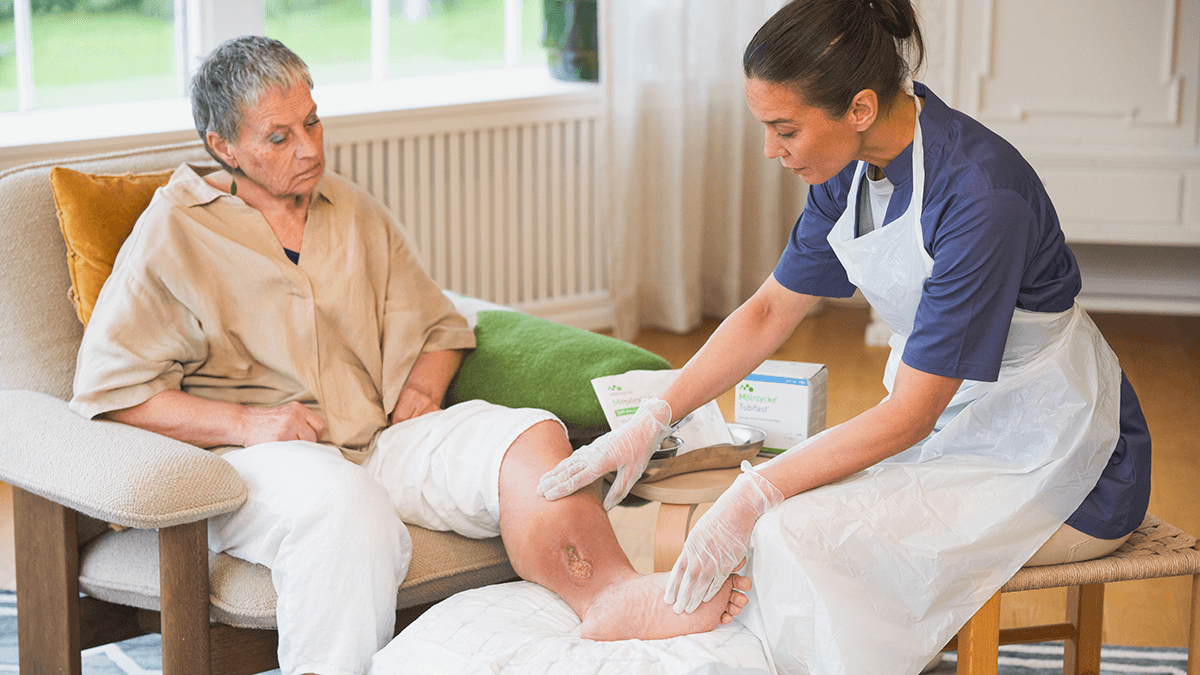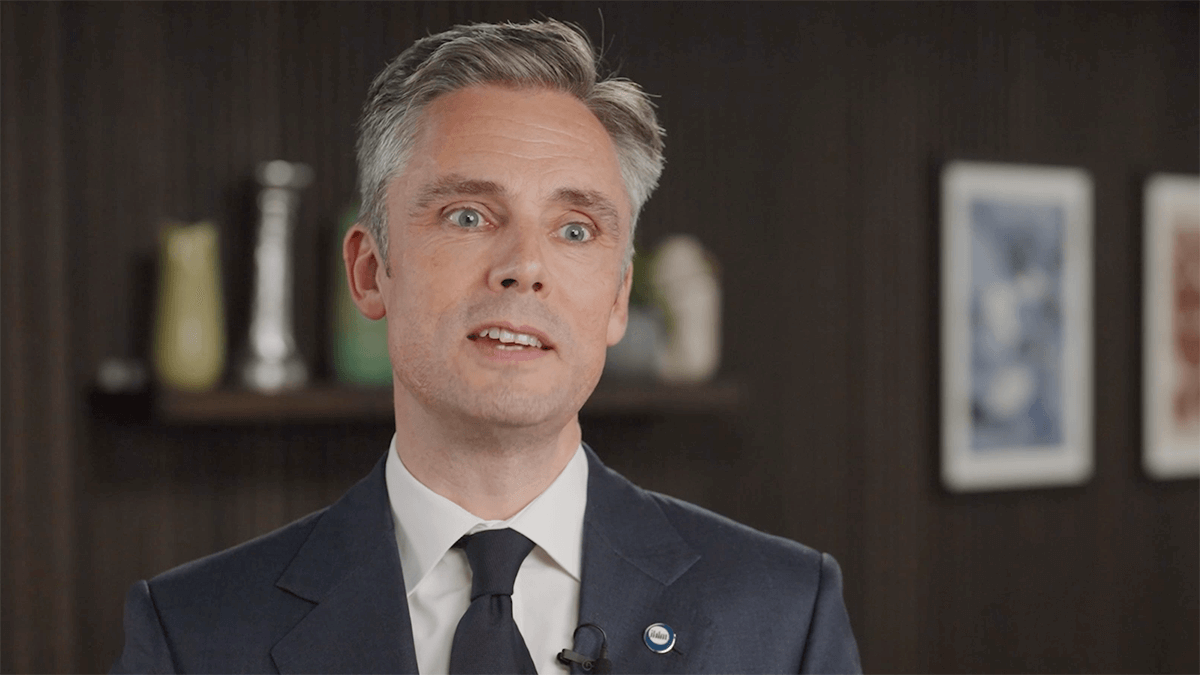A healthy wound bed is essential to the wound healing process. Select a gentle skin cleanser with a pH close to that of the skin to cleanse the wound bed and surrounding skin.
Venous leg ulcers (VLUs) are a common yet challenging condition that requires a holistic approach to treatment. Effective care involves cleansing, debridement, exudate management, and compression therapy - all essential steps in promoting healing and preventing recurrence. By choosing the right solutions, healthcare professionals can support patients in achieving better outcomes and improved quality of life.

Learning how to look after your wound yourself can feel overwhelming at first. To help guide your carers and you through the process, this page gives you a step-by-step look at what you need to do at each stage of caring for your wound. Remember that even if you are looking after your wound at home, it is important to keep in touch with your nurse or healthcare practitioner to make sure your wound has the best chance to heal quickly. They will give you guidance about taking care of your wound properly and safely, while the resources on this page aim to help support you or your carer in changing your dressing safely when your nurse is not able to visit your home. Prepare for your dressing change To get started it is important to be prepared with all the materials you need to change your dressing. [Rich text column collection] 1. Prepare Change the dressing Follow the steps to ensure that you change the dressing properly and safely. [Rich text column collection] 2. Change Remove the old dressing [Rich text column collection] 3. Remove the old dressing Clean the wound [Rich text column collection] 4. Clean [Rich text column collection] 4. Clean 2 Apply the new dressing [Rich text column collection] 5. Apply 1 [Rich text column collection] 5. Apply 2 [Rich text column collection ] 6. Videos 1 What do I need to know about my wound and its healing? You may have many questions about looking after your wound and how you can help it heal. Here are some of the most commonly asked questions. How often should I change my dressing? Leave your dressing in place for as long as possible, or as long as your nurse recommends. Normally a dressing is changed between 1 and 3 times a week. It will be necessary to change your dressing immediately in these situations. If fluid starts to leak out of the edge of the dressing. If the dressing peels off. What should I look out for in caring for my wound? If you notice any of the following, they are signs that your wound might be infected: It is more painful than normal. The amount of fluid increases significantly. The skin around your wound starts to swell and becomes red and fiery. If the smell from your wound gets worse. If there is excessive heat from/in your wound. Other conditions that can affect wound healing are: If you see more yellow or new black tissue developing. You should immediately contact your nurse if you see signs of infection. What can I do that may help my wound to heal? Wound healing is affected by a number of factors. You can play an active part in helping your wound to heal. Here are some steps you can take: Keep the wound moist to support and promote healing. Do not smoke. Eat a healthy and balanced diet. Exercise regularly within your own ability. Get regular sleep. Your wound can take longer to heal for a variety of different reasons related both to your general health and the wound condition. What do specialised wound dressings do? Specialised wound dressings can make a difference in your wound healing because they are designed to provide the protection and environment that supports healing. Some of these attributes include: Providing physical protection for your wound. Keeping the wound moist and preventing the dressing from causing pain and damage at removal. Staying on your wound longer to support wound healing.* Absorbing the fluid from your wound and preventing it from getting on your clothes. Being comfortable to wear. * Depending on the condition of the wound and surrounding skin, or as indicated by clinical practice

What is Safetac and how does it improve patient experience and outcomes? As any clinician knows, patients can endure terrible pain when a dressing sticks to the wound or damages the skin. Likewise, a dressing that doesn’t protect the wound edges can cause maceration which slows down healing and can prolong suffering for those with chronic wounds. We know that clinicians want to prevent this suffering and offer their patients more effective treatment options. That’s where Safetac comes in. Safetac is the original game-changing contact layer. It is used across Mölnlycke’s advanced adhesive dressing ranges and facilitated the development of the first bordered silicone foam dressing. Safetac’s innovative design allows the dressing to mould softly to the skin and yet not stick to the moist wound.1-5 It will protect the wound edges to minimise risk of maceration1, 4, 5, 7 and make the dressing easy to remove without damaging the skin.1-4 It all adds up to a less painful experience for patients at dressing change.1-6, 9 The combination of less pain and less skin and wound damage is the reason that numerous randomised controlled trials associate dressings with Safetac with faster wound healing.2, 3, 4, 9 Which dressings feature Safetac technology? Since its launch at Mölnlycke, Safetac has been a key technology behind our most successful dressings. The range of dressings with Safetac has expanded over the years and there is now a foam dressing with Safetac for almost every type of wound: The Mepilex range with soft conformable foam is suitable for many chronic wounds. The newest member of this family, Mepilex Up, is designed especially for patients struggling with VLUs or similar exudating wounds. Mepilex Border offered revolutionary exudate management and is now superseded by the next-generation, uniquely conformable Mepilex Border Flex, with its increased ability to stay in place. Silver-infused dressings such as Mepilex Ag deliver gentle and effective burn care with an antimicrobial effect. Mepilex Border Sacrum and Mepilex Border Heel have extended Safetac’s influence beyond healing and into the prevention of pressure ulcers. Other advanced dressings also feature Safetac: The Mepitel range, the first wound contact layers to incorporate Safetac, now includes Mepitel Film, a dressing uniquely proven to reduce radiotherapy-induced skin damage.8 Mepilex Border Post-Op, the advanced dressing for surgical incisions, was developed specifically to help reduce complications and support patients’ early mobilisation.1-6 How well-trusted is Safetac technology? Since its launch, Safetac has been used around the world to improve the wound care experience of hundreds of millions of patients. Safetac is trusted with good reason. At Mölnlycke, we are careful to support our products with robust evidence: more than 450 peer-reviewed findings confirm Safetac’s performance advantages. the evidence includes more than 30 randomised control studies. What could Safetac silicone dressings mean for your patients – and your budget? We know clinicians want to reduce patient suffering with less painful treatment options that support faster healing and improved outcomes. We also understand the pressures to reduce the cost of care. In addition to improving the patient experience at dressing change, Safetac also: protects new tissue and intact skin so wounds are undisturbed, supporting faster healing 1-9 seals wound margins to protect skin from leaks and maceration1, 4, 5, 7 By supporting faster healing, Safetac can not only improve the patient experience, it can also reduce the cost of treatment.2, 6, 9, 10 What is the story behind the development of Safetac technology? Safetac was invented by a young product designer at Mölnlycke called Tomas Fabo at a time when advanced wound care technology was in its infancy. Tomas had seen at first hand the pain patients can experience during dressing changes and became driven by the need to prevent this suffering. He began experimenting – even working at night in his own kitchen. Eventually he developed a type of silicone that was to become the key component of our early Mepitel range launched in 1989. Its promise was simple: it wouldn’t stick to the wound and it wouldn’t damage the skin and therefore, be less painful to remove. The rest is history. Tomas achieved his aims and Safetac continues to be at the heart of our advanced dressing ranges, including our most recent innovation, Mepilex® Up. How has Safetac changed the way we think about wound care? Since the launch of Mepitel® in 1989, Mölnlycke has sold well over 4 billion dressings with Safetac, helping millions of people experience less painful healing and preventing hundreds of thousands of pressure ulcers. Thanks to Safetac, wound care is now gentler, more effective, and more innovative than ever before.

Pressure injury vs pressure ulcer Whether you call it a ‘pressure ulcer’, a ‘pressure injury’, ‘pressure sore’ or ‘bed sore’ depends on where you are in the world. Whatever you call it, the problem is global. Pressure injuries move through stages and can become deep tissue injuries that may require surgery. They are also susceptible to serious complications. The current guidelines on preventing pressure injuries There is a range of reputable guidelines, both international and regional, in place. For Europe, as Benedict notes, the first EPUAP guidelines came out in 2009 and have been updated since, in 2019 and 2025. He is positive about the rate of dissemination but has concerns that implementation is more patchy. View the international clinical guidelines on the prevention and treatment of pressure ulcers/injuries. Pressure injury prevention strategies Benedict considers that the most effective strategies for preventing pressure injuries usually involve combining multiple interventions and integrating them into the flow of work. He acknowledges that it can be difficult to engage the support of non-clinicians, such as procurement and finance managers, whose buy-in is crucial to ensure initiatives are appropriately supported. Building a positive business case for pressure injury prevention Benedict suggests directly linking benefits to cost savings to demonstrate the positive financial impact of a pressure injury prevention programme when speaking to procurement and finance specialists. For example, when discussing the impact on length of stay, it is important draw on data such as the cost per day of an inpatient bed. He also suggests thinking beyond the short-term savings and, wherever possible, exploring the financial impact of improved outcomes in a wider healthcare setting and over a prolonged period. Collecting data to demonstrate the benefits of pressure injury prevention Finally, Benedict explains what types of data he believes clinicians should collect and present, both to build the most convincing case and to aid their own understanding of which interventions are most effective. Watch the interview with Benedict Stanberry [Video section] Benedict Stanberry interview Benedict Stanberry, Founder and director of IHLM, Oxford, UK
Get knowledge, learn about our products, get support and more.
Find jobs, our financial reports and more.
Mölnlycke corporateThis webpage contains information that is only intended for healthcare professionals. By selecting ‘Yes, I am’ you confirm that you are a healthcare professional.